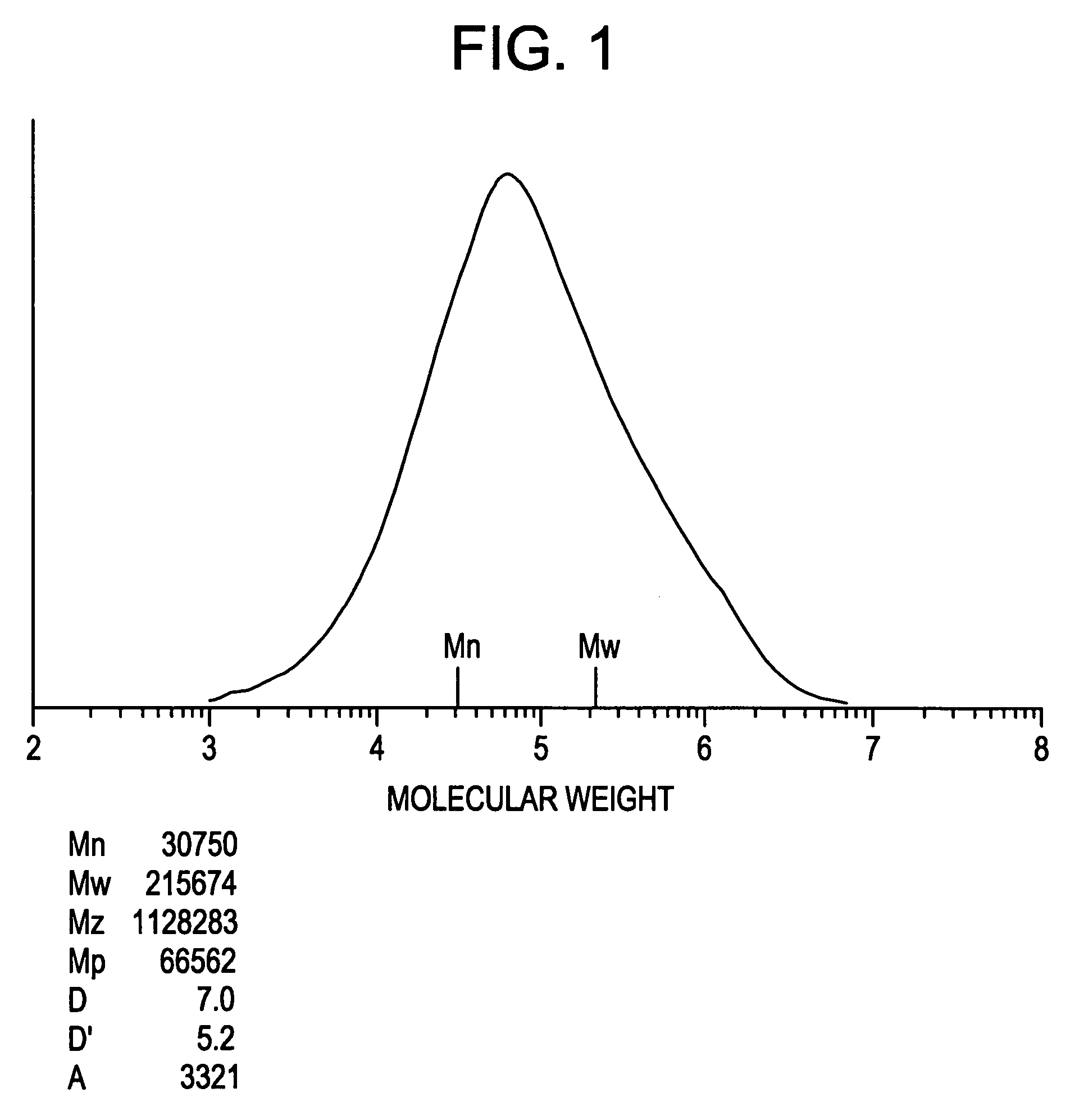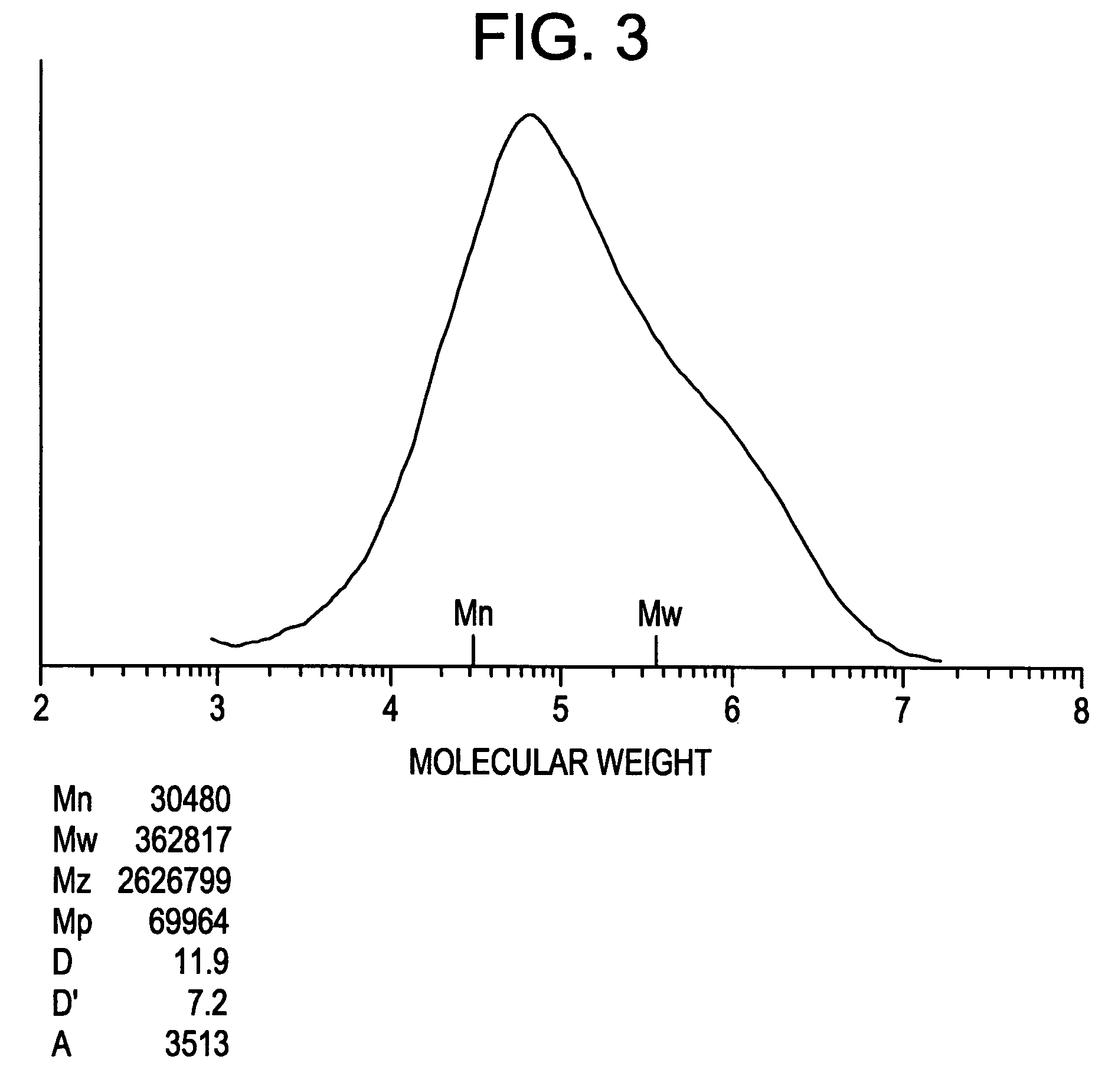Polymerization of polyethylene having high molecular weight
a polyethylene and molecular weight technology, applied in the field ofzeiglernatta and metallocene catalysts, can solve the problems of increasing operating costs
- Summary
- Abstract
- Description
- Claims
- Application Information
AI Technical Summary
Problems solved by technology
Method used
Image
Examples
example 1
[0033]The reactor was filled with 2 liters of hexene and the temperature was increased to 80° C. with agitation. 10 mg of a typical Zeigler-Natta catalyst was suspended in mineral oil and precontacted with 2 ml TEA1 solution (0.25 mmole / 1 in hexene) in a dry box. Hydrogen and ethylene were admitted to the reactor at the flow rates of 2 standard liters per minute (SLPM) and 8 SLPM, respectively, and the reactor backpressure was maintained at 125 psi. The ZN catalyst-cocatalyst mixture was charged into the reactor. The reactor temperature and pressure were maintained for one hour. After one hour of polymerization, 3 mg of a metallocene catalyst, specifically titanocene dichioride, were charged into the reactor and polymerization was continued for another hour under the same reactor temperature and pressure. After transferring the polymer fluff slurry from the reactor to a flask, the solvent was removed and the polymer was collected as dry fluff.
example 2
[0034]The procedure of Example 1 was followed except that 5 mg of titanocene dichloride were charged into the reactor.
example 3
[0035]The procedure of Example 1 was followed except that 10 mg of titanocene dichloride were charged into the reactor.
PUM
| Property | Measurement | Unit |
|---|---|---|
| melt flow index | aaaaa | aaaaa |
| density | aaaaa | aaaaa |
| molecular weight distribution | aaaaa | aaaaa |
Abstract
Description
Claims
Application Information
 Login to View More
Login to View More - R&D
- Intellectual Property
- Life Sciences
- Materials
- Tech Scout
- Unparalleled Data Quality
- Higher Quality Content
- 60% Fewer Hallucinations
Browse by: Latest US Patents, China's latest patents, Technical Efficacy Thesaurus, Application Domain, Technology Topic, Popular Technical Reports.
© 2025 PatSnap. All rights reserved.Legal|Privacy policy|Modern Slavery Act Transparency Statement|Sitemap|About US| Contact US: help@patsnap.com



